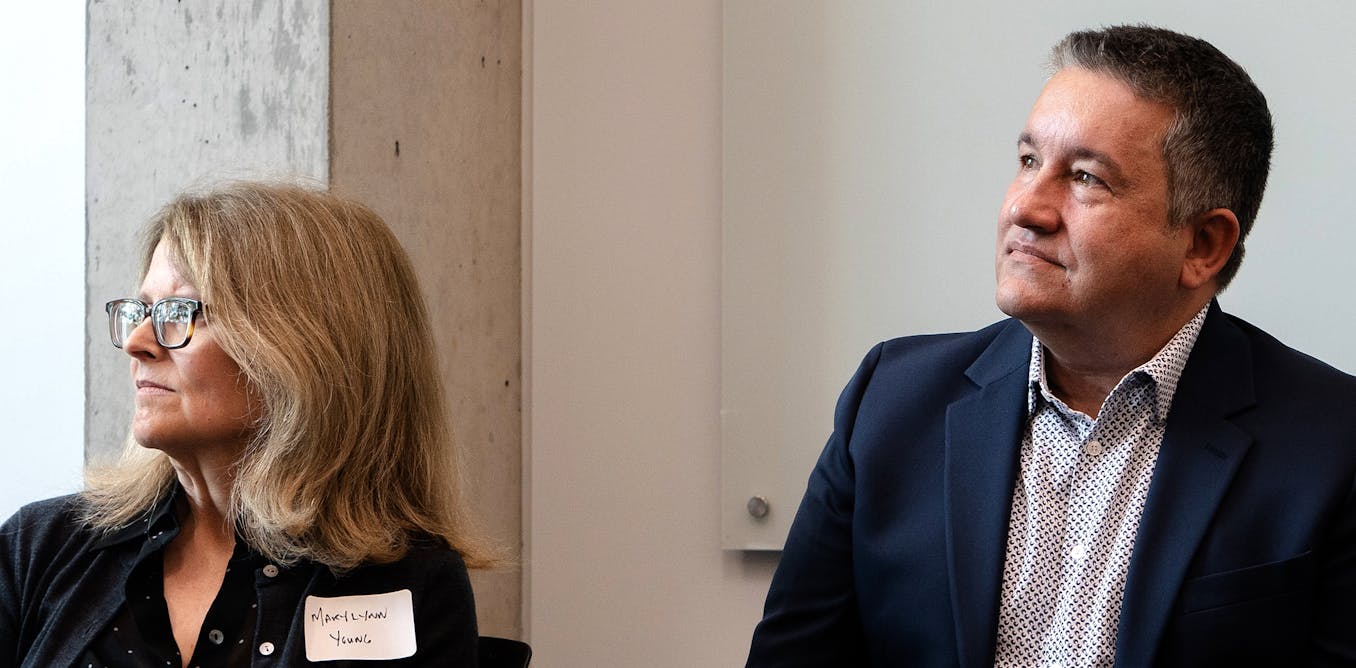I took a walk through the beautiful campus of Brown University in Providence, Rhode Island recently, as I was in the city for the annual gathering of the various editions of The Conversation.
This project follows a devolved model, providing local leadership and engagement with the higher education and research sectors that support it in different parts of the world. Alongside me on this sunny stroll through one of the world’s great educational neighbourhoods was Alfred Hermida, Professor at the University of British Columbia School of Journalism.
Alf and I don’t see a huge amount of each other, but when we do it tends to be pretty productive. We first met in July 2014 at an event at the University of Amsterdam, where I stood in for The Conversation founder Andrew Jaspan, and delivered a speech on the establishment of the project – then it only existed in Australia and the UK. Alf was pretty taken with the story, and the unique model. Less than a week later he was in our newsroom at City, University of London, talking to our editors about his research into social media and news.
But something else was going on in Alf’s head – something about discussions he’d had previously with his colleague Professor Mary Lynn Young that Canada could have its own edition of The Conversation. And for the next couple of years he and Mary-Lynn together built the case within the country’s higher education sector for a membership-supported Conversation Canada. It launched in 2017 under the remarkable leadership of Scott White and now forms one of the most important and valued parts of the global network.
So it was great to see Alf and note the edition’s success. But it was also fascinating to hear about his ongoing research and insights into the changing media landscape, both in Canada and internationally. Among the trends Alf and colleagues have noticed recently is that many students no longer arrive harboring ambitions of working for big media players. In part, he feels, this is down the decline of such full-career opportunities. But he also hears from students that they don’t see themselves reflected in the legacy news outlets. Instead it is the small independent players and even solo operations now excite many aspiring journalists more than traditional newsrooms.
Author provided, CC BY
“I have a global cohort of journalism students in class,” said Alf. “Many are driven by a sense of mission, looking to address the way journalism has historically marginalized or mispresented diverse communities. They look to journalism as a way of making the world a better place and are drawn to new journalism start-ups that are looking to reimagine what journalism is and could be.”
Alf views the Conversation as part of this shift in how journalism is done. As I’ve written before, we are sometimes asked if what we do really is journalism. I’ve suggested that it may not matter, so long as our content is valuable, trusted and accessible. Alf goes further though, arguing that the production method deployed by The Conversation and pursuit of informed, evidence-based reporting
that drives it, makes it fundamentally journalism, albeit of a different style to that which typified the newspaper era.
Alf explained: “The scholars who write for The Conversation are taking on journalistic practices, guided and mentored by our team of professional journalists. While the authors are not journalists in the traditional sense, they are producing journalism that seeks to explain and interpret the world around us to help the public lead better lives. This is what journalism is all about.”
As for the route ahead for The Conversation Canada, and the network more broadly, Alf, as you might expect (and hope), grounds some of his thoughts in research. Indeed, in research conducted by one of his graduate journalism students.
Savannah Parsons considered traffic to The Conversation Canada late in 2023 as part of her study, and sought to ascertain what type of content drew readers in, and what kept them there. The picture is of course mixed, but there is a clear pattern that illustrates that expert engagement with news and events is a central factor in bringing readers to the website and our content more broadly. However, Parsons’ study also indicated that content we might traditionally describe as “more featurey”, that is, less tied to events, perhaps more narrative and perhaps even taking the form of audio rather than – or as well as – text, plays a vital role in building a loyal audience that will return to Conversation content, time after time.
So, as was ever the case, there is a mix to be considered. And it will be for edition leads to decide exactly how that mix is deployed, and in what form, to suit individual markets. But it is clear to Alf, and I think to most of us at The Conversation, that news-relevance, timeliness and, of course, research, will be the central factors driving the project through its second decade.

The post “Research and news relevance key factors driving the future of The Conversation – edition founder” by Stephen Khan, Editor was published on 11/04/2024 by theconversation.com






































Leave a Reply